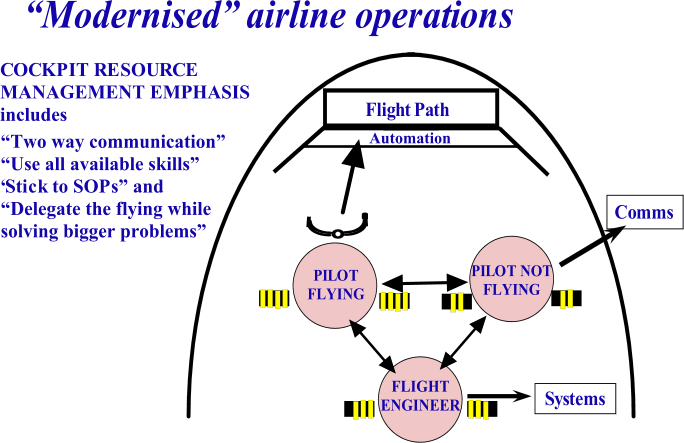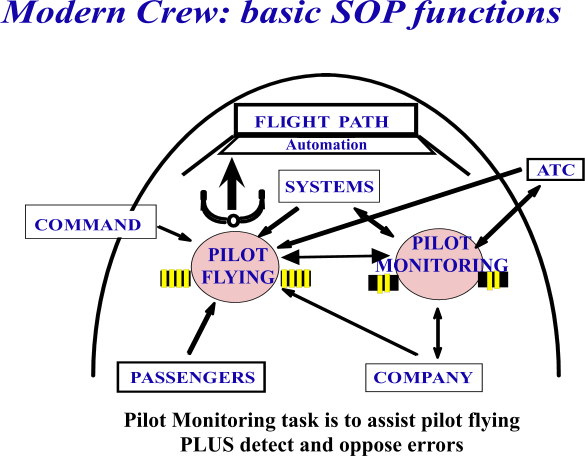Since the 1980s, we have much improved facilities on the aircraft, and several generations of Crew Resource Management (CRM) training. At the very least, CRM is intended to ensure that the Pilot receives information and advice not only from the other crew members, but also from external sources. A fundamental element will also be that wherever possible, adherence to SOPs will enhance safety, and that in complex and demanding flight situations, it may be best for the Pilot to transfer pilot flying duties to the co-pilot.

Today's 2 pilot crew
The next diagram shows the normal basic two-person flight deck SOP.

The Captain (usually in the left seat) is the "Pilot" and handles the aircraft as Pilot Flying (PF). He or she plans the flight trajectory, responds to inputs from ATC, from the company, and from the systems, and functions as the overall commander.
The First Officer is the Co-pilot (usually in the right seat), handling communications and system operations. The Co-pilot has two basic functions: most of the time, it is to assist the Pilot in achieving his intentions, but he or she is also monitoring, correcting, and if necessary preventing the Pilot doing what he intends.